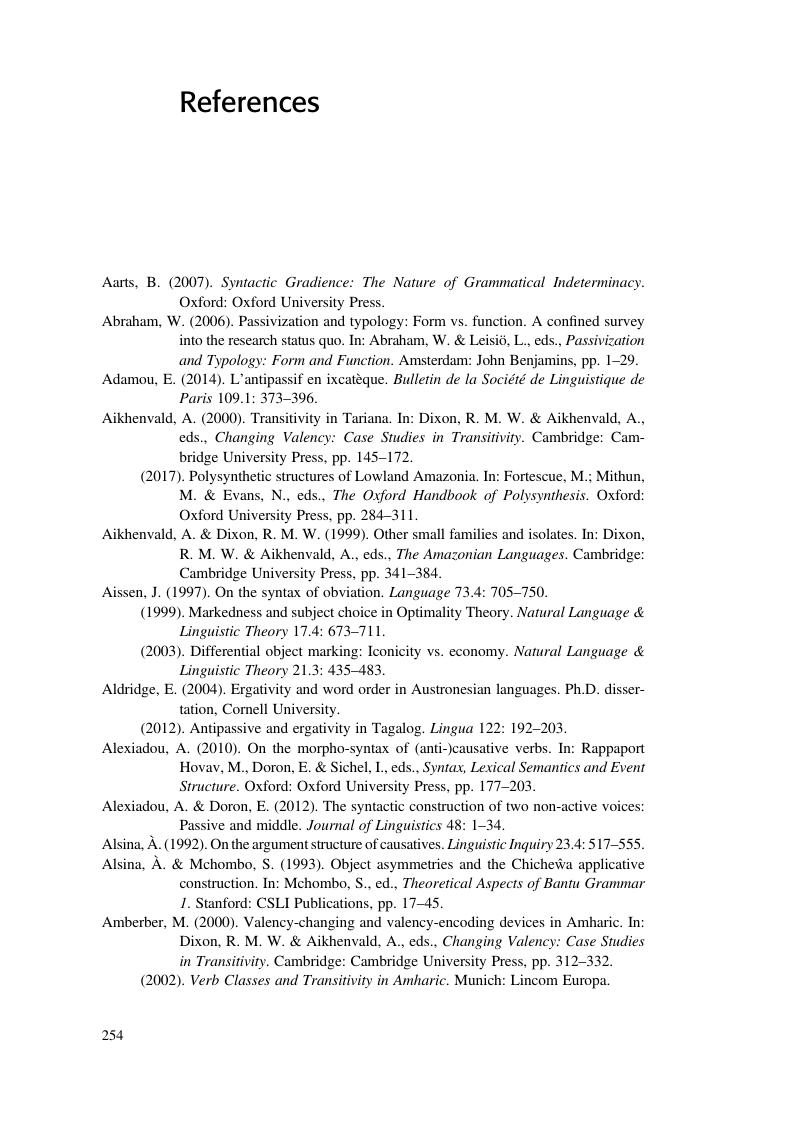Book contents
- Grammatical Voice
- Cambridge Textbooks in Linguistics
- Grammatical Voice
- Copyright page
- Contents
- Figures
- Tables
- Acknowledgments
- Abbreviations
- 1 Introduction
- 2 Changing Semantic Valency: Causatives, Applicatives, and Related Constructions
- 3 Changing Syntactic Valency: Passives, Antipassives, and Related Constructions
- 4 In Search of Balance: Agent and Patient Voices
- 5 The Affected Subject: Reflexives, Reciprocals, and Middles
- 6 Covert Diatheses: Uncoded Alternations
- 7 The Fringes of Voice
- 8 Diachronic Aspects of Voice
- 9 Revisiting Voice Theory
- References
- Author Index
- Language Index
- Subject Index
- References
References
Published online by Cambridge University Press: 22 February 2019
- Grammatical Voice
- Cambridge Textbooks in Linguistics
- Grammatical Voice
- Copyright page
- Contents
- Figures
- Tables
- Acknowledgments
- Abbreviations
- 1 Introduction
- 2 Changing Semantic Valency: Causatives, Applicatives, and Related Constructions
- 3 Changing Syntactic Valency: Passives, Antipassives, and Related Constructions
- 4 In Search of Balance: Agent and Patient Voices
- 5 The Affected Subject: Reflexives, Reciprocals, and Middles
- 6 Covert Diatheses: Uncoded Alternations
- 7 The Fringes of Voice
- 8 Diachronic Aspects of Voice
- 9 Revisiting Voice Theory
- References
- Author Index
- Language Index
- Subject Index
- References
Summary

- Type
- Chapter
- Information
- Grammatical Voice , pp. 254 - 284Publisher: Cambridge University PressPrint publication year: 2019

